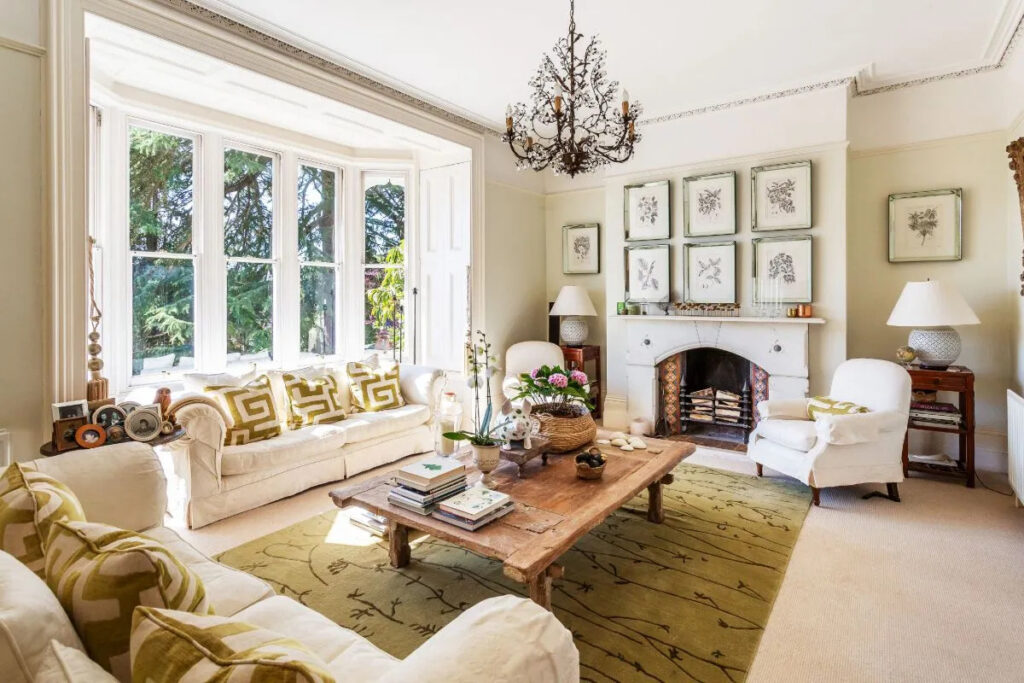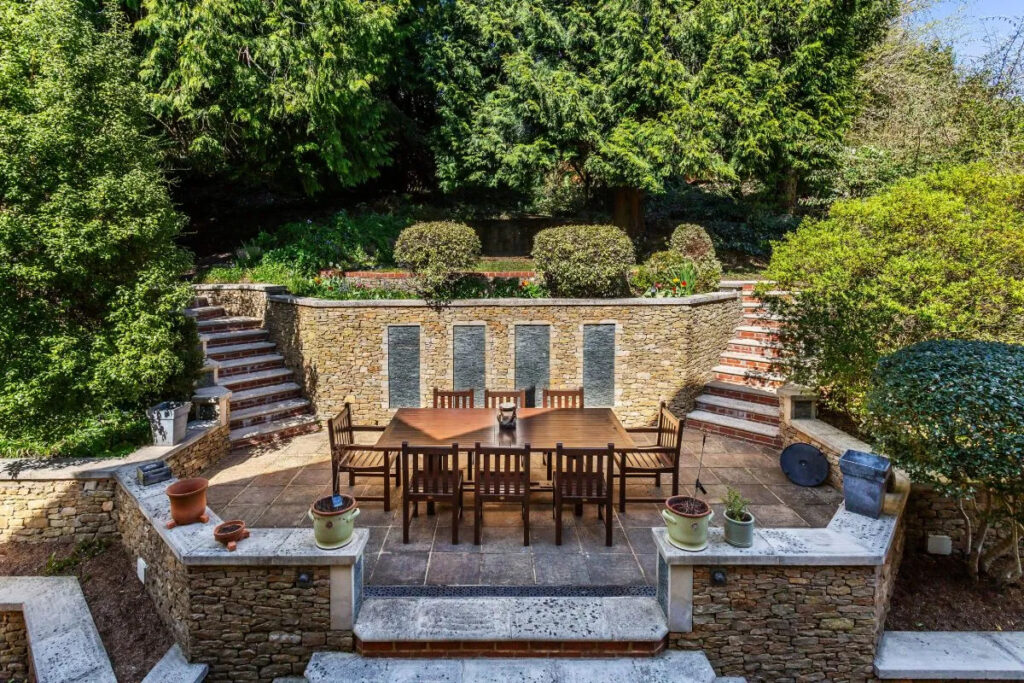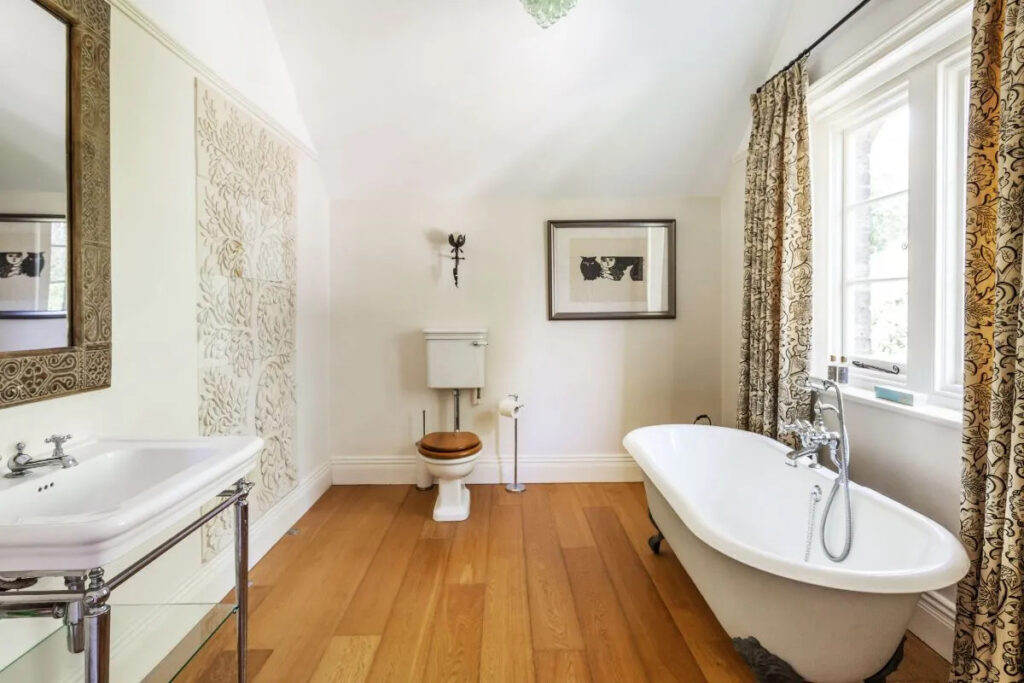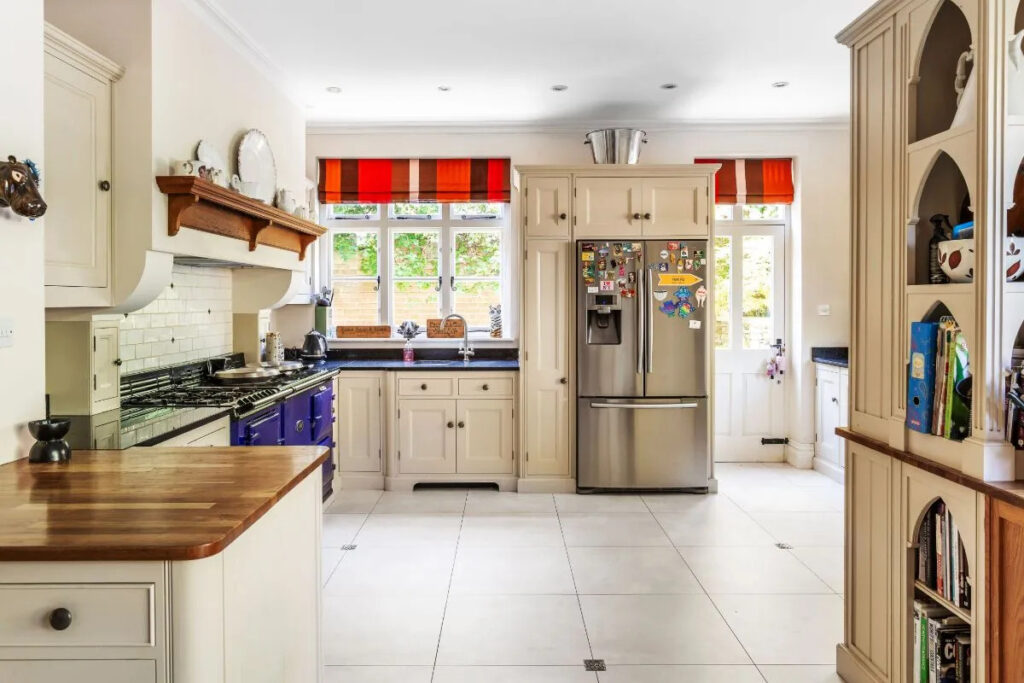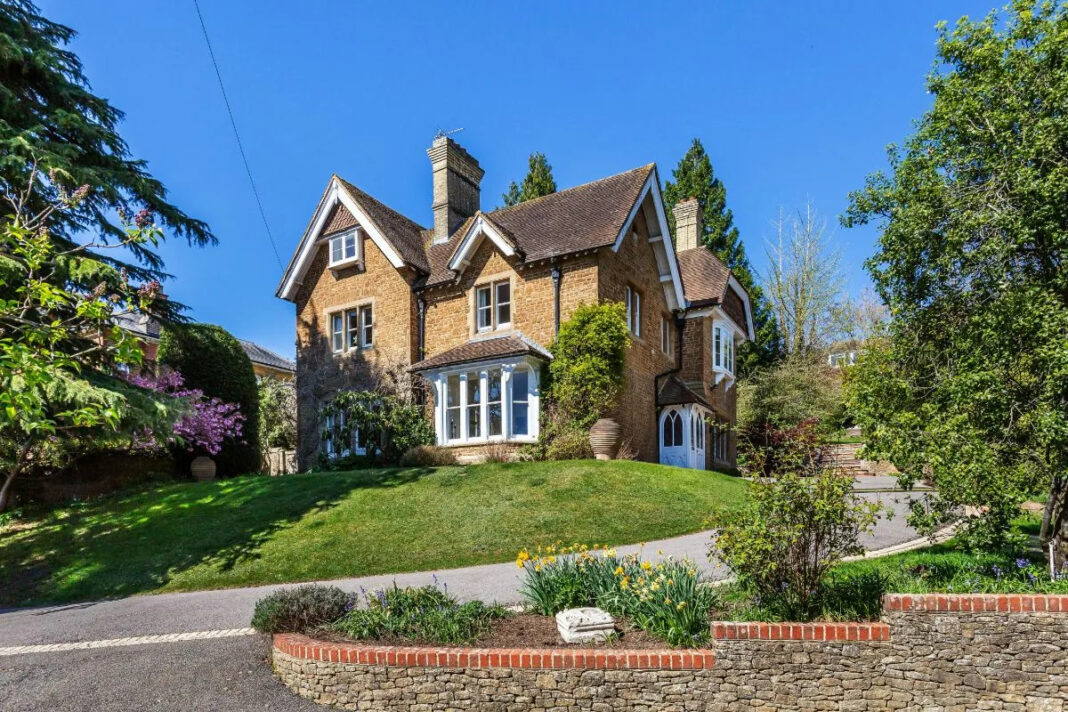If architectural walls could whisper, Loquats wouldn’t speak—they’d recount. Located in the prestigious St. Catherine’s district of Guildford, this commanding Gothic Revival estate is far more than a Victorian jewel. It’s a time capsule wrapped in stone a home that not only witnessed history but withstood it.
Now offered at £3.3 million (approximately $4.5 million), Loquats invites a discerning buyer into an extraordinary narrative, one marked by scientific brilliance, wartime resilience, and architectural prestige.
In 1915, the skies above Guildford bore the dark silhouette of the German Zeppelin L.13. On the night of October 13, one of its bombs pierced the stillness of this quiet English town one of twelve explosives hurled onto the St. Catherine’s neighborhood. While no human life was lost, Loquats sustained direct impact. A swan and seventeen chickens fell victim to the assault, but the house, like its legacy, endured.
Commissioned in 1866 by John Rand Capron—a trailblazing amateur scientist and pioneer in spectroscopy—the estate sits on what was once a sweeping estate crowned by Capron’s private observatory. Remarkably, that observatory still stands today, one of the last privately owned astronomical structures of its kind in the U.K., adding a rare scientific allure to the residence’s cultural cachet.
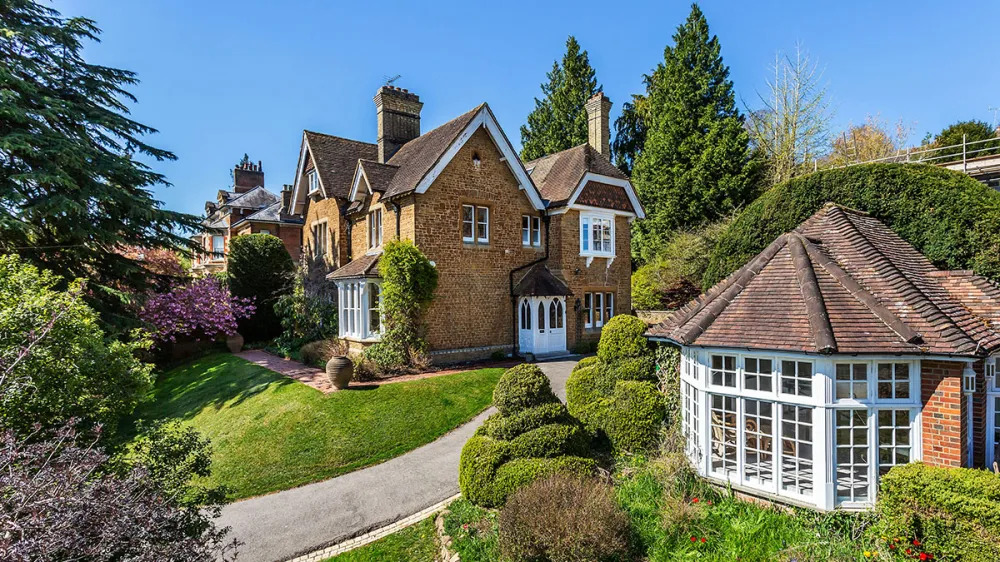
Architecturally, Loquats is the work of Henry Woodyer, a disciple of the Gothic Revival movement and admirer of Pugin. Completed in 1867, its façade features ecclesiastical detailing, pointed arch windows, and intricate stonework that reflect a reverence for Gothic craftsmanship. The home’s launch was marked by Capron’s “rearing supper” at the local Railway Hotel—a nod to Victorian opulence and celebration.
Step inside, and the drama continues. A central reception hall leads into four commanding reception rooms, each echoing with high ceilings, carved mantels, and the quiet luxury of a bygone era. The residence balances historical grandeur with modern flow—ideal for both private family life and high-society entertaining.
Beyond the walls, the grounds offer serene sophistication. Shaded terraces, dry stone walls, manicured borders, and intimate outdoor entertaining areas form a garden that feels as contemplative as it is cultivated. It’s a private Eden nestled just minutes from Guildford’s bustling heart.
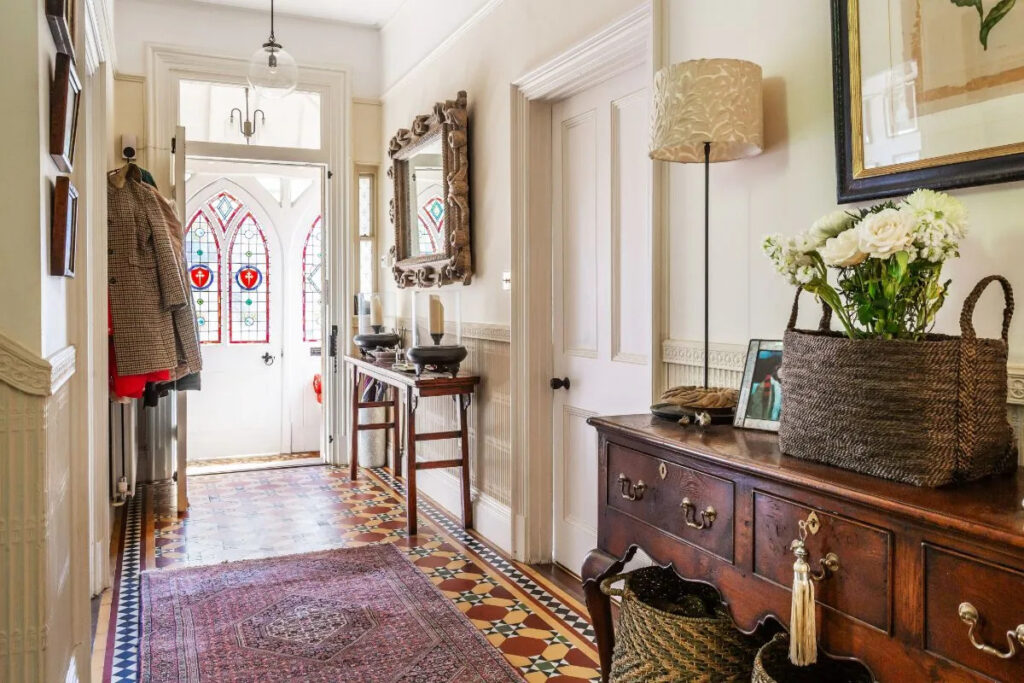
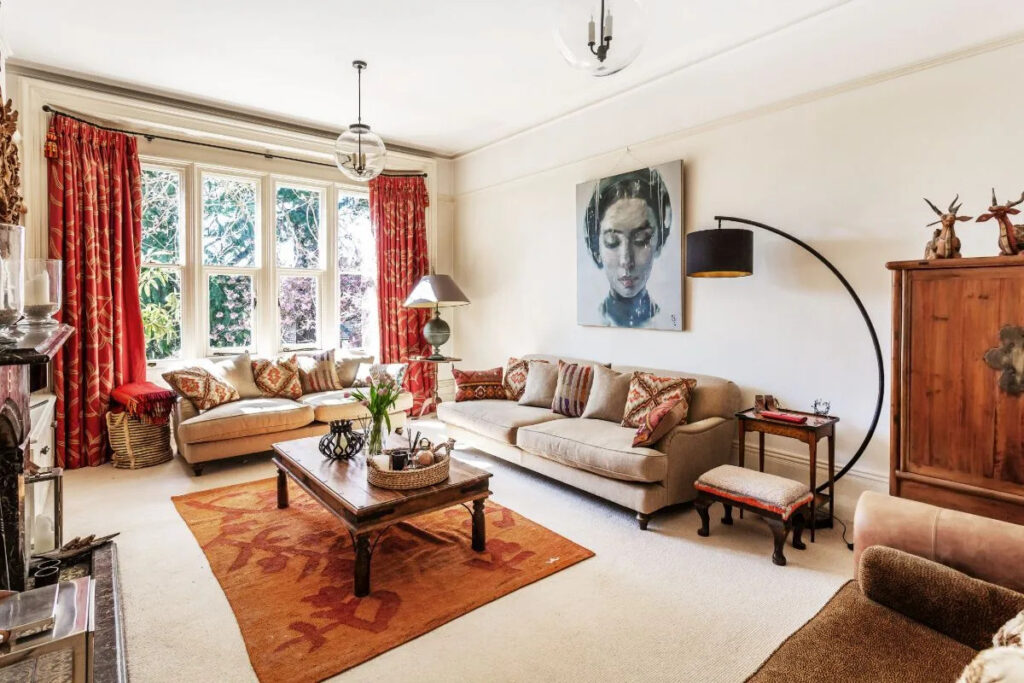
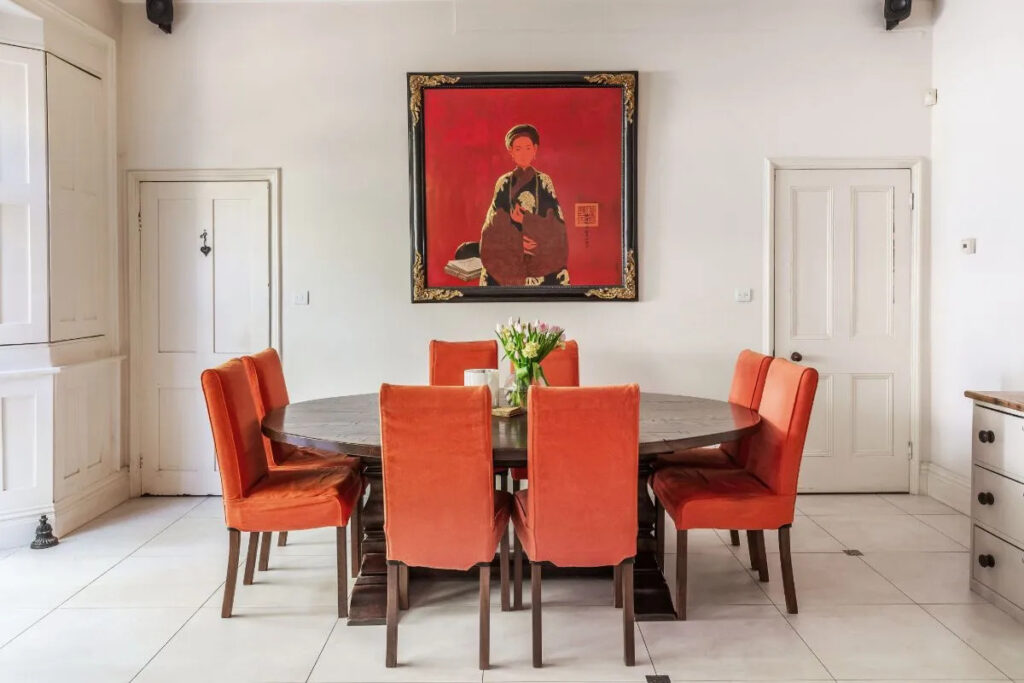
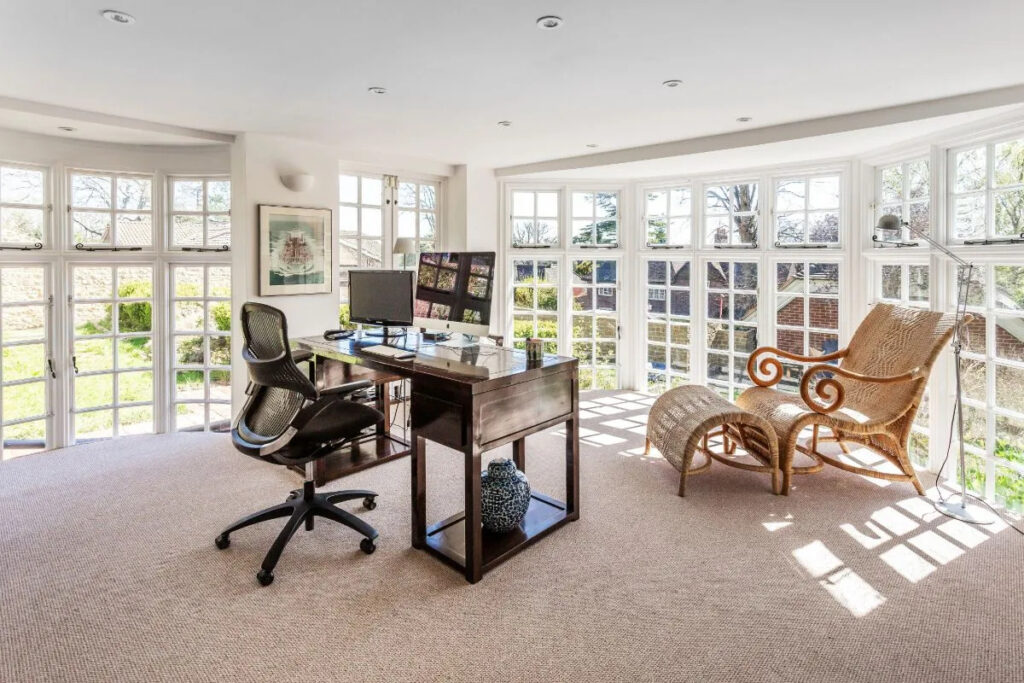
“This is more than a house—it’s a chapter of British history, Few properties combine architectural elegance, intellectual heritage, and historical provenance so compellingly”- James Ackerley of Knight Frank
Chris Dean of Chantries & Pewleys echoes the sentiment: “Loquats represents a bridge between past and present—a residence for those who seek beauty with meaning.”
For those seeking not just a luxury home but a legacy to uphold, Loquats is more than a property. It’s a resurrection, a conversation across centuries, and a bold invitation to live where history, science, and design collide.
